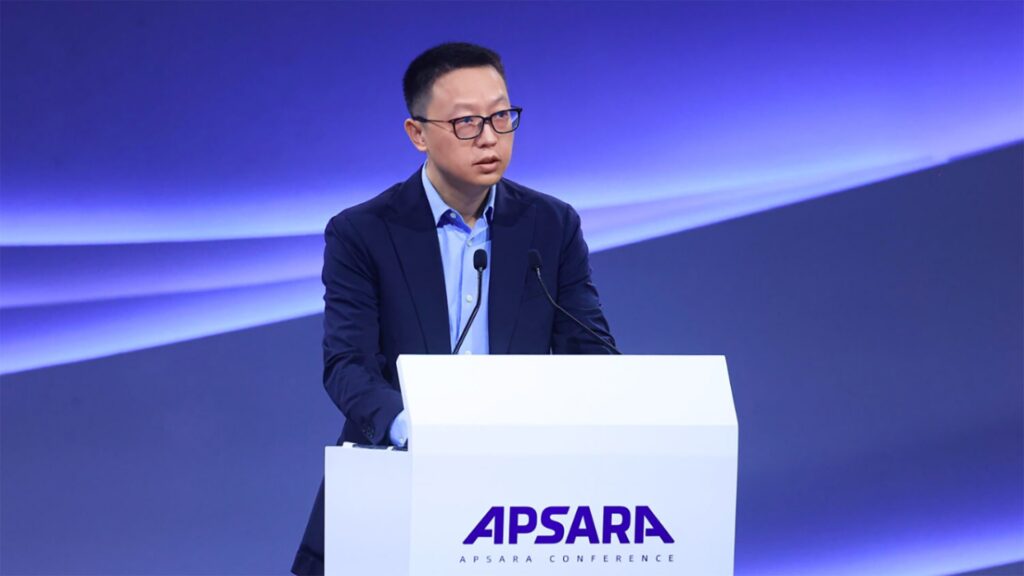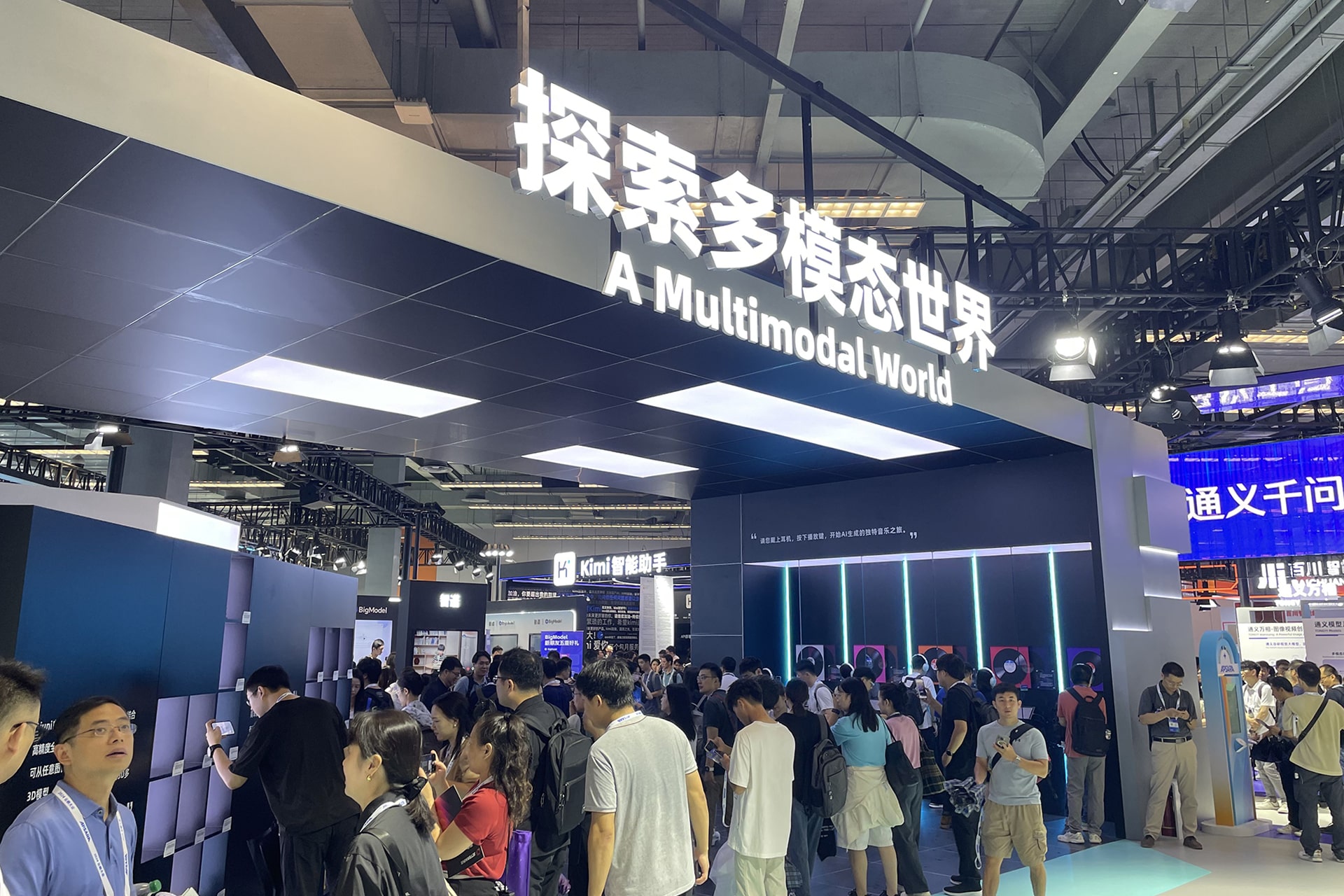Alibaba Cloud’s annual Apsara Conference opened on September 19 with its trademark energy and excitement, but this year, artificial intelligence took the spotlight. AI had already made waves at last year’s event, showcasing innovations like AI-generated stories, images, and digital humans. But 2024 marked a new level of sophistication, with pavilions buzzing as startups demonstrated AI applications across a wide range of sectors.
AI’s influence has both expanded and deepened. Inside the AI pavilion, attendees could sense the emergence of specialized fields. Alibaba Cloud categorized AI solutions into themed groups, with companies presenting real-world products in areas like programming, 3D and 4D generation, and even music production.
One of the hottest attractions in 2024 was the embodied intelligence zone, which featured more than 20 robotics companies. Visitors were captivated by robots performing acrobatic flips and resisting external forces, demonstrating just how far robotics has come.
Last year, Alibaba Cloud’s slogan focused on offering the most open cloud platform for the AI era. The company unveiled a mix of open-source and proprietary models, alongside updates to its cloud infrastructure. Since then, Alibaba Cloud’s investment in AI has only grown.
This year also marked the debut of Alibaba Cloud’s CEO, Eddie Wu, at the conference. Under his leadership, the company has delved deeper into generative AI. In his keynote, Wu highlighted that, while large models last year were limited to assisting with simple coding, they have since evolved to understanding more complex requirements and handling intricate programming tasks.

At the conference, 36Kr tested a variety of AI products and noted that iterations are happening faster than expected. Last year, tools like AI-generated images and customer service platforms suffered from slow processing speeds. Now, real-time conversations with digital humans, complete with the ability to interrupt interactions on demand, are possible.
Despite these advancements, widespread AI adoption still feels distant. Wu acknowledged that, while AI has progressed faster in the past 22 months than at any point in history, the technology remains in its early stages. He emphasized that Alibaba Cloud will continue to make significant investments in AI infrastructure to fuel this ongoing evolution.
Large models are costly, but prices are falling
At this year’s Apsara Conference, Alibaba Cloud introduced the next generation of its Tongyi Qianwen models, collectively branded as Qwen2.5. This series includes large language models, multimodal models, mathematical models, and code models—over 100 versions in total. The Qwen2.5 models mark a significant leap forward.
Pre-trained on 18 trillion tokens, the new models deliver an 18% performance boost over their predecessors, handling up to 128,000 tokens—the equivalent of around 100,000 Chinese characters—and generating up to 8,000 words. The flagship model, Qwen-Max, is now nearly on par with GPT-4 in terms of performance.
Code models require advanced reasoning and inference abilities, which are also emphasized by OpenAI’s o1 model. Industry observers have noted that Qwen has become China’s second major large model, following Deepseek, to significantly improve programming capabilities. They also view its advancements in mathematical reasoning as a major breakthrough for China.
In 2024, the large model industry remains both unified and disrupted. The global AI community spent much of the summer anticipating the release of GPT-5. However, OpenAI’s o1 model, with its focus on improved reasoning and cognitive abilities, helped ease some of the tension.
At the Apsara Conference, the computing pavilion featured banners proclaiming AI as the third wave of cloud computing, a nod to its growing prominence in the industry.
Despite the enthusiasm, China’s AI industry is navigating a wave of controversy over the aggressive price cuts that began in May. Some experts fear that slashing prices too early in the development of the large model market could stifle growth.
In the past year, the price of accessing Alibaba Cloud’s Tongyi Qianwen API via the Tongyi Bailian platform has fallen by 97%. Today, processing one million tokens—the equivalent of a 3.5-million-character Chinese book—costs just RMB 0.50 (USD 0.07).
These cuts have benefitted Alibaba Cloud. In Q2, AI helped drive both revenue and profit growth. Quarterly revenue rose 6% to RMB 26.549 billion (USD 3.7 billion), with AI-related products seeing triple-digit growth. The public cloud business posted double-digit gains, while adjusted EBITA profit skyrocketed 155% year-on-year to RMB 2.337 billion (USD 327.2 million).
Alibaba Cloud believes there is still room for further price reductions in AI models.
In comparison to global markets, China’s price cuts have been particularly steep. Some companies have opted to sacrifice short-term profits to remain competitive. However, Alibaba Cloud’s CTO, Zhou Jingren, rejected the notion that the company was cutting profits to lower prices. He said that rapid model iterations and improvements in inference architecture and system optimization have allowed Alibaba to pass on savings to customers.
Zhou compared the current trend of price cuts in generative AI to the early days of cloud computing. Globally, cloud providers implemented multiple rounds of price cuts to attract more businesses, which helped the industry scale and lower the marginal cost of services. This approach, Zhou noted, allowed the sector to grow.
That said, Zhou emphasized that the generative AI boom is still in its infancy compared to cloud computing. China’s computing market is still dominated by CPUs, and the manufacturing of GPUs and other chips remains in an exploratory phase.
He stressed that price reductions don’t necessarily mean a price war, likening the current trend to the early days of mobile data plans. Two decades ago, data usage would have been unaffordable at today’s scale. Zhou suggested that AI prices remain too high for future applications.
AI’s future lies beyond screens
In his keynote speech, Wu made a bold prediction: the true potential of AI doesn’t lie in mobile screens but in transforming both the digital and physical worlds.
This perspective contrasts with the prevailing belief in China’s AI community that the most significant opportunities lie in consumer-focused AI, aimed at creating superapps like WeChat or TikTok.
At the Beijing Academy of Artificial Intelligence (BAAI) Conference in June, Lee Kai-Fu, founder of 01.AI, expressed skepticism about embodied intelligence, noting that connecting large models to the physical world introduces numerous challenges, including safety issues and mechanical malfunctions.
Lee argued that, for now, large models are better suited to the virtual world. He pointed out that, while the US excels at creating innovations, China’s strength lies in scaling innovation, as it did with superapps like WeChat and Douyin.
Though China’s large models are approaching GPT-4’s level, they remain limited to niche applications. A breakthrough superapp has yet to emerge, and most AI innovation has been funneled into enhancing existing superapps.
Wu’s view offers a different outlook. He believes China’s large models will take a different path than those of the mobile internet era. After OpenAI released o1, it became clear that China’s AI evolution might not follow the same trajectory as the mobile internet boom.
Accordingly, Alibaba Cloud has made significant investments in large models. Its Tongyi Qianwen family includes both open-source and proprietary models, with specialized capabilities in image processing, video, and programming. Over the past year, the company has also invested in five of China’s six “AI tigers.”
Some industry observers believe OpenAI’s o1 model has extended the global AI industry’s lifeline. In China, o1 could have even more profound implications, particularly for AI applications in the physical world.
According to OpenAI’s artificial general intelligence (AGI) scale, cited by Bloomberg, AI development can be ranked from Levels 1–5:
- Level 1: Chatbots, AI with conversational language.
- Level 2: Reasoners, human-level problem solving.
- Level 3: Agents, systems that can take action.
- Level 4: Innovators, AI that can aid in invention.
- Level 5: Organizations, AI that can do the work of an organization.
The consensus is that current AI progress is in the early stages of Level 2, the reasoning phase. Zhu Jun, chief scientist at Shengshu Technology, predicted that GPT-o1’s advancements could quickly propel us from Level 2 to 3, with breakthroughs to Level 4 possible within the next 18 months.
Zhu added that o1 represents a paradigm shift in large model training. The models are now more intelligent in their interactions and learning processes. This points toward two primary directions for AI: digital content and real-world applications such as robotics and automotives.
While China is still catching up to the rest of the world in large model development, it has a distinct advantage in physical industries like robotics and automobiles, thanks to its strong manufacturing base in eastern and southern China.
In a report on embodied intelligence by 36Kr, industry insiders highlighted that China is uniquely positioned to capitalize on the potential of humanoid robot startups, thanks to its robust production capacity and strong market demand. In May, Unitree Robotics introduced its G1 humanoid robot, priced at RMB 99,000 (USD 13,860), setting a new global standard for affordability in robotics.
With the release of OpenAI’s o1 model, this trend is likely to pick up speed. At this year’s Apsara Conference, Alibaba Cloud introduced a new intelligent cockpit solution for cars. In the future, AI assistants are expected to not only respond to voice or gesture commands but also make autonomous decisions based on environmental inputs. The days of physical buttons may be numbered—just speak, and the AI will do the rest.
Wu underscored that the future value of generative AI could be ten or even 100 times greater than that of the mobile internet. Over the last 30 years, the internet connected people, information, commerce, and factories, creating tremendous value by enhancing global collaboration. Generative AI, he said, has the potential to create new value by boosting productivity, ultimately raising global productivity levels.
As generative AI enters its second year, the conversation around large models is shifting from consensus to differentiation, with the debate centered on belief versus skepticism. For Alibaba, its ambition to seize AI’s opportunities is unmistakable. Wu concluded by stating that, throughout history, people have consistently overestimated the short-term effects of new technologies while underestimating their long-term potential. Those who doubt technological revolutions, he noted, often miss out on the greatest rewards.
KrASIA Connection features translated and adapted content that was originally published by 36Kr. This article was written by Deng Yongyi for 36Kr.

